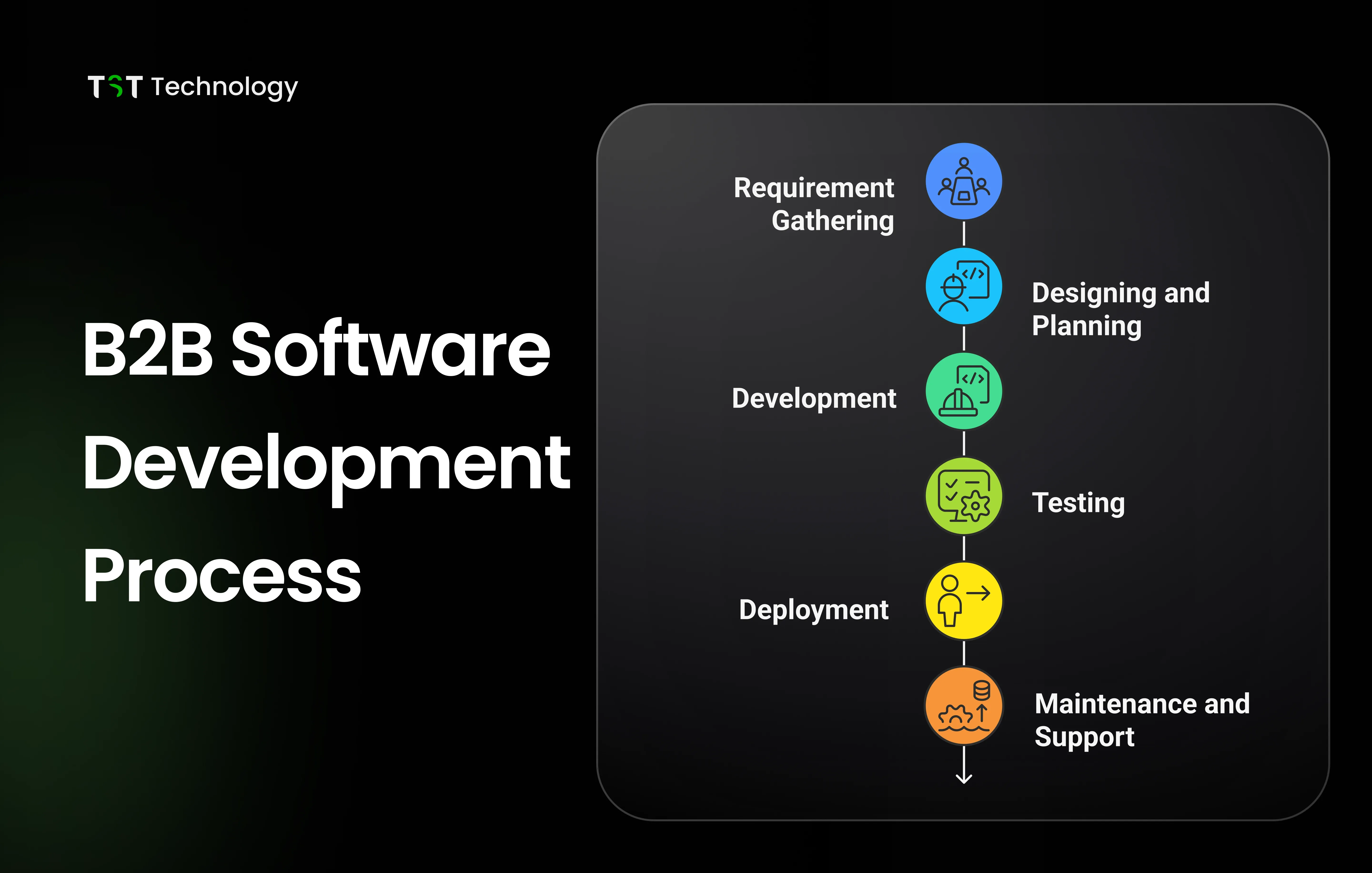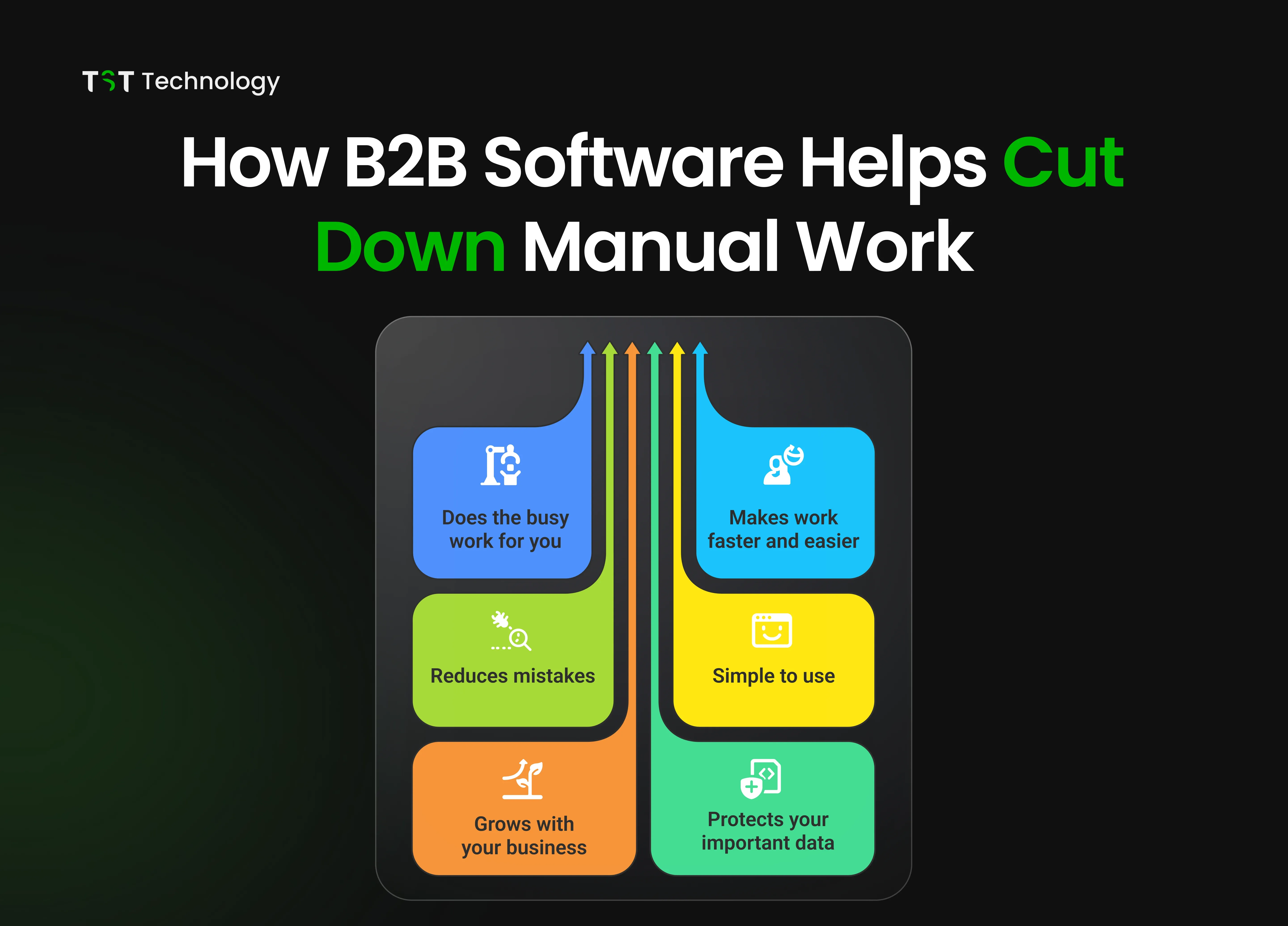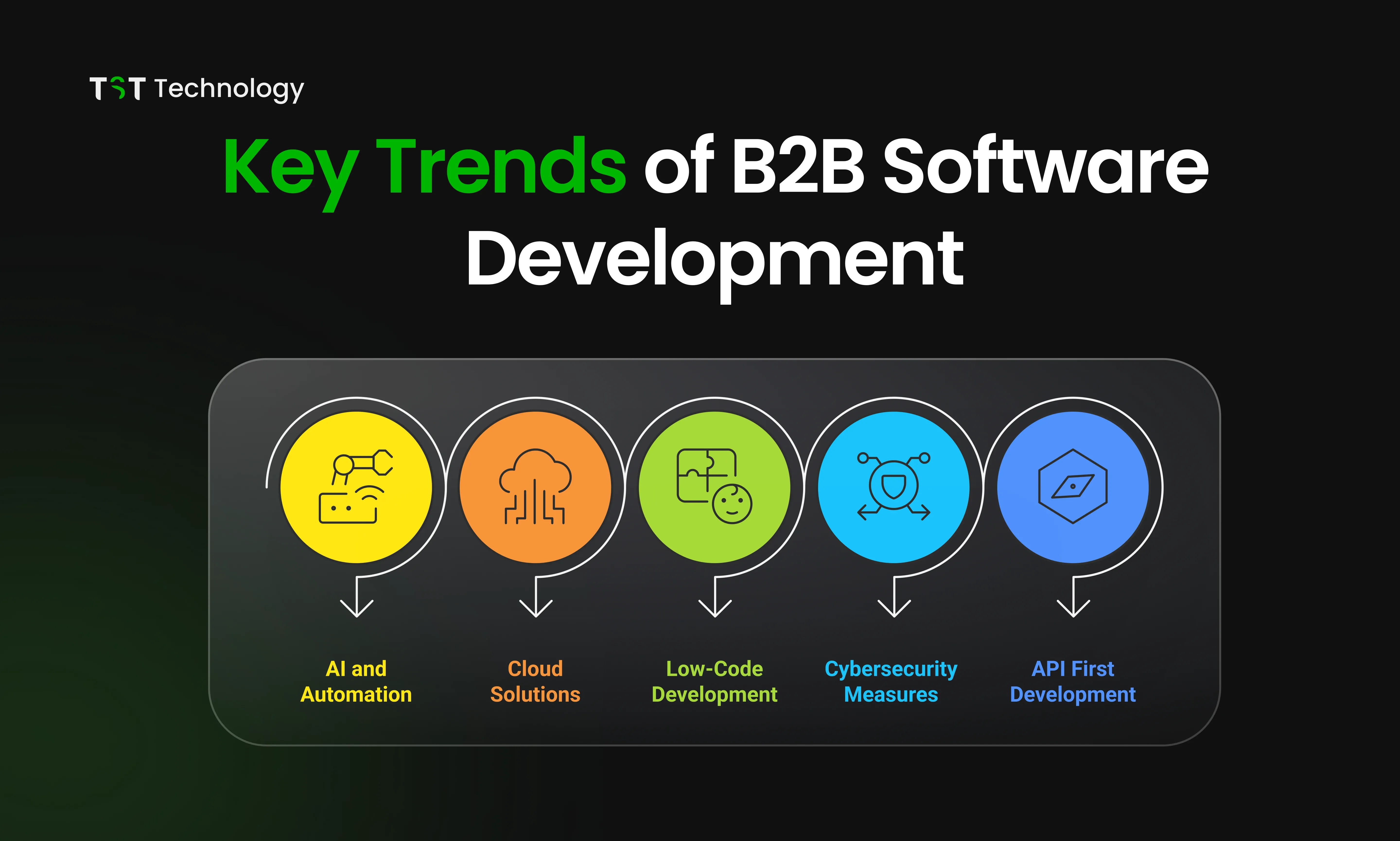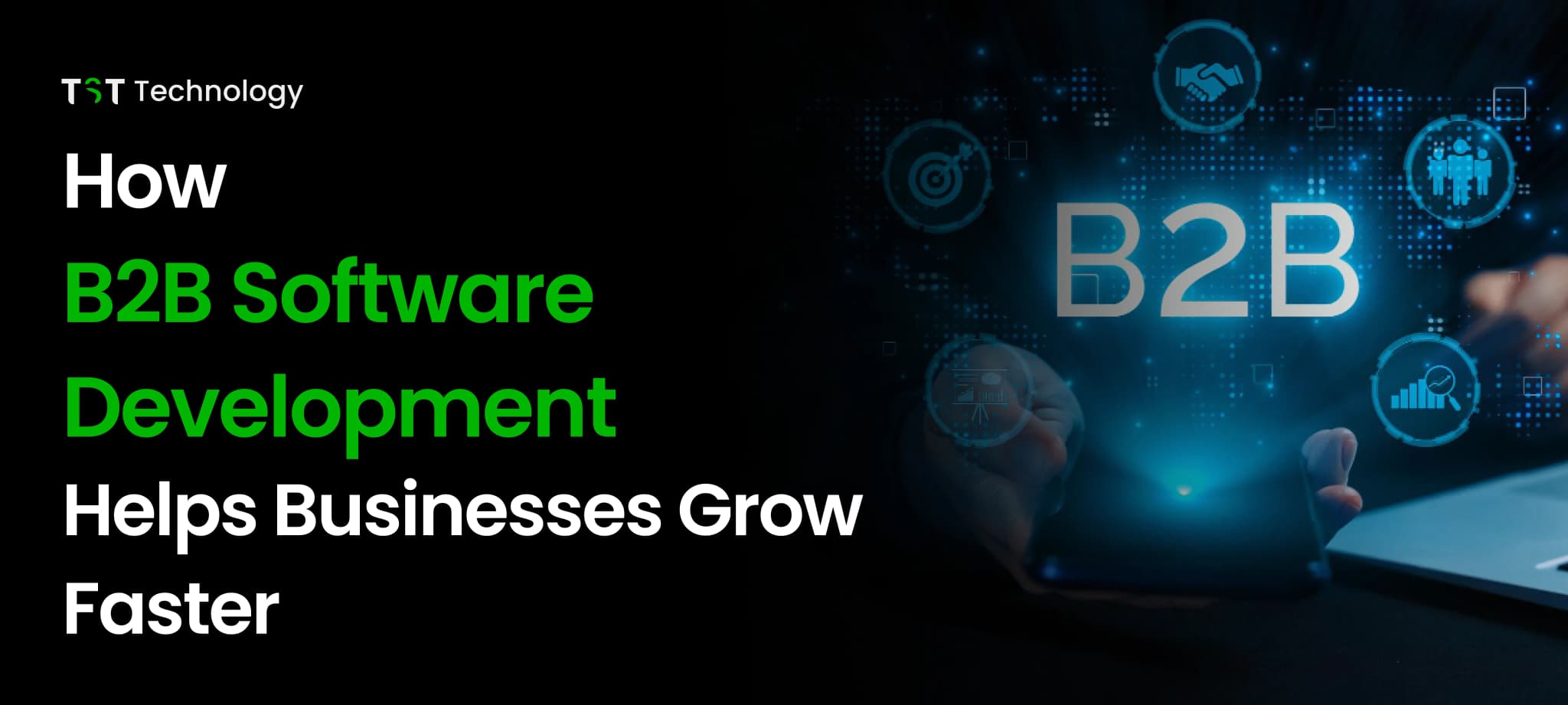Does paperwork take too much time?
Many businesses still rely on printing, signing, scanning, and filing documents on a daily basis. This process is slow, frustrating, and takes time away from meaningful work.
Most teams want to focus on their goals instead of getting stuck in paperwork.
This blog post will explore how B2B software can help startups save time and simplify their workflows.
What is B2B Software Development?

B2B software development refers to the process of creating software solutions designed specifically for use by other businesses rather than individual consumers. These solutions help companies streamline operations, improve efficiency, and enhance decision-making.
Unlike B2C (Business to Consumer) software, which targets end users, B2B software is tailored to meet the needs of organisations. It can include tools for inventory management, logistics, customer relationship management (CRM), analytics, billing systems, and other related applications.
For example, while Zomato and Swiggy are consumer-facing food delivery platforms, they also operate on a B2B level. They provide restaurant partners with dashboards and order management tools that help these businesses manage deliveries, track performance, and enhance their service. The software behind these systems is a good example of B2B software development.
B2B Software Development Process

Developing B2B software involves six key steps that transform an idea into a functional product. Each step ensures the software meets business needs and operates efficiently.
Step 1: Requirement Gathering
Business works best when we keep it simple.
Let’s sit down and talk just heart to heart, no pressure, no fancy words, just real, honest conversation. We want to know what’s going well and what’s getting in the way.
We ask simple questions and listen. Because the more we understand you, the better the software will work for you. That’s how we build something that truly supports your business.
Our goal? To make your work life easier, not harder.
Step 2: Designing and Planning
Once we understand your needs, we begin creating a plan.
We determine how the software should work, what it should look like, and what your team needs to do their job, without stress or confusion. We think about the technical side (how it runs behind the scenes) and the user side (how it feels to use).
It’s not just about building something, it’s about creating something that fits you.
Step 3: Development
Now we start creating the software, step by step.
We bring your ideas and plans to life. We focus on making it work smoothly and do precisely what your business needs, with nothing extra and no mess.
You’ll be in the loop the whole way, no surprises.
Step 4: Testing
Before you use it, we test the software carefully. We make sure it works as it should. We check every detail, every button, and every screen.
We want to be confident that everything runs smoothly and stress-free when your team uses it.
This step is all about getting it right before it reaches your hands.
Step 5: Deployment
Once it’s ready, we help you go live.
We ensure it fits with your current tools and systems and stays close during the launch to ensure everything works perfectly from day one.
There's no need to stress about the tech. We’ve covered it, so you can focus on what matters most.
Step 6: Maintenance and Support
Just because it’s launched doesn’t mean we’re done.
We’re here to support you in fixing anything that breaks, updating things as your needs change, and keeping everything running smoothly.
As your business grows or shifts, we’ll ensure the software keeps up with you. You’re never on your own.
How B2B Software Helps Cut Down Manual Work?

Running a business involves many small, repetitive tasks. B2B software helps by automating these, allowing your team to focus on what matters most.
Does the busy work for you
- Automates routine tasks like data entry and order processing
Makes work faster and easier
- Centralised tools and information, no more switching between apps or paper files.
Reduces mistakes
- Automated processes lower the risk of human error.
Simple to use
- Easy to set up and use minimal training required.
Grows with your business
- Scales with your needs as your business expands.
Protects your important data
- Safeguards sensitive business information with built-in security.
Key Trends of B2B Software Development

Artificial Intelligence and Automation
AI and automation help businesses work smarter, not harder.
Chatbots answer your questions anytime, and innovative tools use data to make better decisions. These technologies save time, reduce mistakes, and make life easier for everyone. They’re a growing trend that changes how we do business every day.
Cloud-Based Solutions
You get up-to-date information on sales, customer activity, and market trends. It helps businesses adapt to evolving processes and goals.
Low Code and No Code Development
Building software doesn’t have to be complicated. With low-code and no-code tools, anyone can create apps more quickly, requiring no advanced coding skills. This growing trend is helping teams move quickly and bring ideas to life with less effort.
Enhanced Cybersecurity Measures
Implements software security, database protection, and firewall configurations. Prevents unauthorised access and safeguards business data.
API First Development
Ensures seamless collaboration between different software systems. Enhances software adaptability and growth potential.
Real Life Case Studies of B2B Software Implementation
We use apps like Swiggy, Zomato, and Nykaa to order food or buy products. But have you ever considered how they manage everything?
They use special B2B e-commerce software development to make things work smoothly. Let’s see how!
Swiggy & Zomato: How Food Reaches You

Ordering your favourite meal might seem simple, but a whole system works together to make it happen, for you and the businesses behind the scenes.
For Restaurants and Partners
Restaurants use easy-to-manage tools to track orders, update menus, and stay on top of what’s cooking. Delivery partners also get support through apps that help them plan routes, manage time, and earn better.
For You, the Customer
You get to see where your food is in real time, from the kitchen to your doorstep. Payments are smooth and secure, and the app even remembers what you like, so it’s easier to decide next time.
Behind every order, smart tech and strong partnerships work together to bring food to your door fast and with care.
Nykaa: How It Delivers Your Products

Nykaa sells beauty and skincare products online, but a lot is happening in the background to ensure everything runs smoothly.
Working with Brands
Nykaa partners with many beauty brands. The software helps place large orders, track deliveries, and contact suppliers.
Keeping Products in Stock
The system gives a quick alert when something is about to run out. This allows Nykaa to restock quickly and avoid delays.
Faster Deliveries
Innovative tools help find the closest warehouse and the best route to deliver your order on time.
Helping You Find What You Love
The app remembers what you like to browse and gives helpful suggestions. Thanks to this behind-the-scenes tech, Nykaa keeps customers and business partners happy.
Future of B2B Software Development
The future of B2B software development looks bright, with innovations in cloud computing, data analytics, and other emerging technologies enhancing efficiency.
Companies are increasingly adopting these technologies to optimise their workflows.

B2B Software in 2030: What’s Changing in Business Tech
Technology is growing rapidly, helping businesses work more efficiently and quickly. Here’s what’s new:
More intelligent AI
- Businesses now use innovative computer tools (AI) to help with daily tasks, make informed decisions, and serve customers better, much like having a competent helper on their team
Work from Anywhere
- With cloud tools, people can work from home, the office, or while traveling. It’s simple to stay in touch and finish your work.
Better Security
- Keeping information safe is vital as more work happens online. Companies now use stronger security measures to protect their data from hackers.
In short, business software in 2030 will be more innovative, flexible, and safer, all designed to simplify people's work.
Conclusion
The world of B2B software is changing quickly, and the stats show it.
Innovative tools like AI, cloud computing, and automation are helping businesses do more with less.
If you want to grow and stay ahead, now is the time to choose the right technology.
Start something great. Contact us today.






